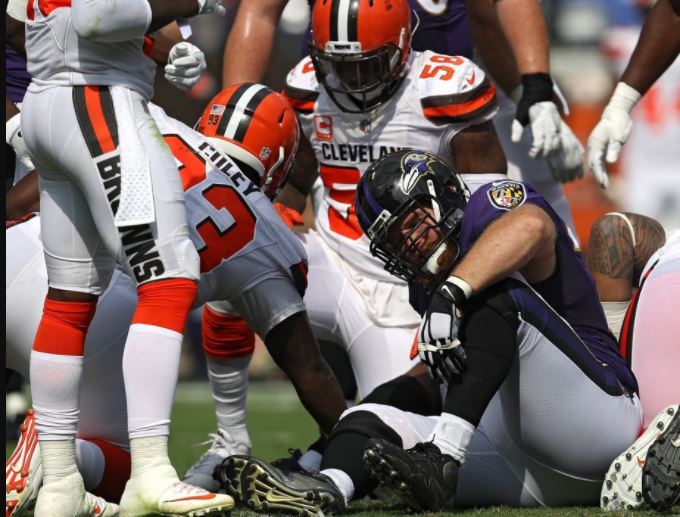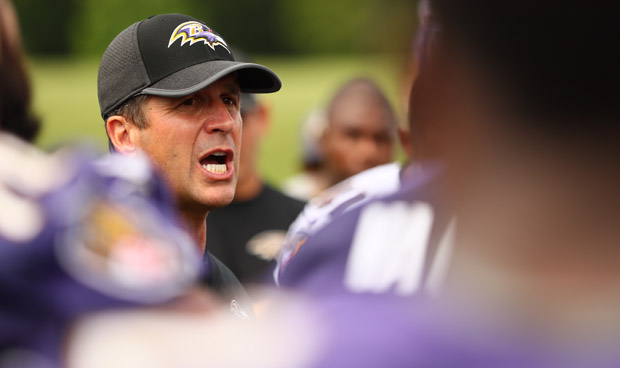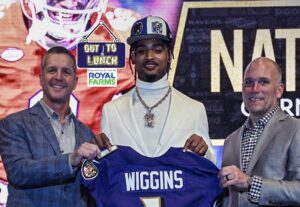Key Dates, Deadlines and Salary Cap Ramifications as Training Camp Approaches
With Training Camp set to open on Friday, several key NFL calendar dates become important and have great significance for the building of the team’s roster and for its Salary Cap.
OVERVIEW
Several key factors are in effect and have already come into play:
RULE OF 51 – At this time of the offseason, a team’s Salary Cap is determined by the “Rule of 51.” The Rule of 51 is in effect because team rosters now total 90 players (or more if some players are already on Injured Reserve) and it would be impossible to fit all 90+ players under the Cap. As such, the league’s CBA dictates that only the highest 51 Salary Cap numbers (and all bonus prorations for players outside of the top 51 and all dead money from players released) counts against the Cap at this time. This is the Rule of 51. RSR’s Salary Cap table illustrates how the Rule of 51 operates.
WAIVERS – As Training Camp and the Preseason progress, teams will make adjustments to their rosters. While often used interchangeably, there is actually a distinction between “releasing” a player and “waiving” a player. Players with four or more years of service time (known as “vested veterans”) are released and immediately become free agents. Players will less than four years of service time in the league (known as “non-vested veterans”) are “waived” and subject to a 24-hour waiver period. Teams must make waiver claims for such players and the player is awarded to the team with the highest waiver priority (presently based on draft order; priority will begin to be based on team records after Week 3 of the regular season). If a player goes unclaimed on waivers, he becomes a free agent. For a more detailed explanation of the Waiver rules, see here.
PHYSICALLY UNABLE TO PERFORM (PUP) LIST – It has already been reported that Guard Marshal Yanda is set to begin training camp on PUP. This is usually precautionary, especially for veterans returning from injury. There are two PUP lists – “active” and “reserve.” A player on PUP can work out and rehab with the team but is prohibited from participating in team drills. In order to be removed from PUP later in training camp or prior to the beginning of the season, a player must be placed on “active” PUP. If the player is not ready to come off of PUP before the start of the season, he will be transferred to “reserve” PUP and must miss a minimum of the first six games of the season. To be placed on either PUP list, the player must go on PUP at the beginning of Training Camp. Once a player has participated in a practice, he becomes ineligible for either of the PUP lists.
INJURED RESERVE/INJURY WAIVERS – A 2018 NFL By-Laws change has made it no longer necessary to place non-vested veterans (players with less than 4 accrued seasons of service time) on Injury-Waivers before placing them on IR. In the past, the need for Injury Waivers caused teams to risk losing the player to a waiver claim and on occasion some teams took advantage of this to poach players. As such, teams would often continue to carry the player on the 90-man roster until the final cutdown in order to not risk losing the player. The new By-Law solves this issue and non-vested veterans can now go directly onto IR without having to first pass through Waivers.
SPLIT CONTRACTS – Most undrafted free agents (UDFAs) and lower-round draft picks have split contracts, which means that if the player ends up on a reserve list (IR or PUP), he will receive a reduced base salary. Some veterans (vested or not) on one–year deals may also have split contracts. As an example, a rookie (UDFA or later round draft pick) who is place on IR will likely see his base salary reduced from $480K down to $363K.
IMPORTANT DATES
TRAINING CAMP OPENS – Veteran players report to Training Camp on Wednesday, July 18th, with the first full team practice set for the following morning.
WORKOUT BONUS CHARGES – The league’s CBA dictates that players are entitled to receive a daily stipend for attending the team’s organized offseason workouts. For 2017, this amount is $215 per workout. Some veteran players have negotiated for additional workout bonuses to be included in their contracts. The CBA further dictates that from the beginning of the league year in March until Training Camp begins, the team’s Salary Cap is charged with the maximum amount of possible offseason workout bonuses. For 2018, that amount is $619,200. Once training camp begins, that amount will be removed from the team’s Cap and the actual amount of workout bonuses earned by the players will be added to the team’s Cap. This usually operates to create a minimal amount of Cap space because the players rarely reach the maximum amount of possible offseason workouts.
FIRST PS GAME – The Ravens have FIVE preseason games this year, starting with Hall of Fame game on Thursday, August 2nd.
DOWN TO 53 – In past years, the NFL had two (2) cutdown dates, by which teams first cut down from 90 to 75 players and then a week later cut down to the final 53. However, starting in 2017, the NFL and NFLPA agreed to get rid of that first cutdown date. So now, teams will be able to maintain their 90-man roster all the way until after the final preseason game and then cut down to 53 by 4:00 p.m. on the Saturday after the final preseason game. This year that date is September 1st. At that time, teams must either cut players or place them on a reserve list (IR or PUP) to get down to 53.
ESTABLISHING PRACTICE SQUADS – At Noon on Sunday, September 2nd, the waiver period for players released in the final cutdown expires. At 1:00 p.m. that day, teams may begin signing players to their practice squads. Teams’ practice squads may consist of 10 players. The minimum salary for a practice squad player in 2017 is $7,600 per week (or $129,200 if on the PS for entire season). In 2015, the NFL removed its prohibitions on giving guaranteed money and/or signing bonuses to potential PS players. This means that teams will sometimes compete for PS players, as opposed to the gentlemen’s agreement to not poach another team’s PS players that generally existed prior to the rules change. Recent years have also seen an increase in teams paying PS players a weekly salary that is greater than the minimum PS salary. For instance, last year, the Ravens paid several players over the minimum ($7,200 in 2017), most notably QB Josh Woodrum, who received $12,000 per week. For practice squad eligibility rules, see this page.
For 2018, the Ravens will carry an 11th player on their Practice Squad as an exempt “overseas” player. This player (FB Christopher Ezeala) will remain on the Practice Squad for the entire season and is not eligible to be activated to the 53-man roster (nor does he count against the team’s Salary Cap).
NEW IR RULES – In 2012, the NFL for the first time in recent memory, allowed teams to designate a player (one player) who had been placed on IR to return to the active 53-man roster later in the season. Under the prior rules, once placed on IR, a player’s season was over. In 2016, the NFL removed the need to designate a single player as “designated to return” and allowed teams to decide at any given time which player they wanted to have return from IR. In 2017, the NFL extended the ability to return from IR to a second player. Any player designated to return must have been on IR for at least six weeks and, once designated to return, is then allowed to practice for at least two weeks before being activated. The player cannot be activated before having sat out for at least eight games.
One caveat: Only players who are on the original 53-man roster before being placed on IR are eligible to return from IR. Any player then placed on IR after 4:00 on Sunday, September 2nd, is eligible to be one of the 2 players who can be recalled from IR later in the season.
CAP COMPLIANCE, END OF RULE OF 51 – At 12:00 a.m. on the Thursday before the first regular season game (Sept 6th this year), the Rule of 51 expires and teams must have all players – 53-man roster, IR, PUP, PS – fit under the Cap.
The Ravens presently have around $8.8M in Salary Cap space. As of now, there is only one player on IR (OT Steven Moore), so the team will presently have to count the 53 players on the active roster + Moore on IR + anyone that starts the season on PUP + 10 PS players (total of at least $1,292,000) under the Cap. So, as of now, at least 64 players will have count against the Cap at the beginning of the season.
But, as we know, with the inevitability of training camp and preseason injuries on the horizon, that number of players that will likely need to be held under the Cap is going to go up (the Ravens started 2017 with 12 players on IR).
OTHER MISCELLANEOUS FACTORS
GUARANTEED SALARY FOR VESTED VETERANS – Any vested veteran (at least four years of service time) who is on the team’s 53-man roster for the first game of the season is entitled to termination pay (if he’s never received termination pay before) if he is released at any point later in the season. This means that his base salary is essentially guaranteed for the year. This is why you will see teams releasing marginal veteran players prior to Week 1 and then immediately re-signing them early the following week. There is also an in-season termination pay that applies to vested veterans signed during the season, which essentially guarantees the player 25% of the salary they would have received if not for being released (again, if they haven’t already received termination pay).
INJURY SETTLEMENTS – Teams can work out injury settlements for players who have been placed on IR, but who aren’t expected to be injured for the entire season. This allows the team to save some cash (and Salary Cap space) and gives the player the opportunity to try and catch on with another team later in the season, instead of remaining on IR for the entire year. The amount of an injury settlement is based on the number of weeks the player is expected to be unable to practice or play.
Teams may also release a player from IR later in the season when the player has been deemed medically fit to return to playing (i.e. he must be able to pass a physical). This is essentially the same as an injury settlement as the player has already been paid while on IR, but again, it saves the team some cash and Cap and frees the player to try and find a job on another team’s active roster or PS.
IN-SEASON WAIVERS – Prior to the trade deadline, waivers applies as explained above and vested veterans and non-vested veterans are still treated as they have been since March. After the trade deadline on October 30th , though, all players – whether vested or non-vested – are subject to waivers. This presumably gives all teams an equal shot at obtaining the player via the waiver system and protects the competitive balance aspect of the waiver system (i.e. giving lesser teams an opportunity to obtain talent).













